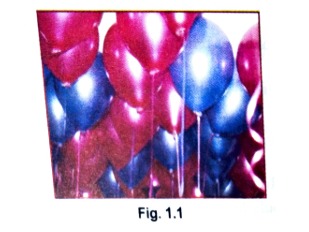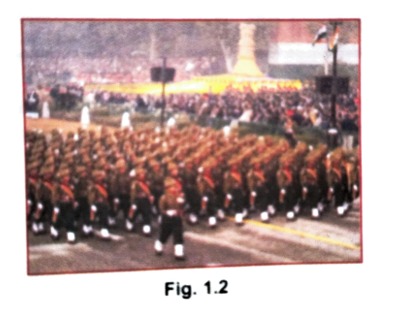Topic Question Set
Q 1
:
Teaching Mathematics through activities is a powerful approach that enhances student’s understanding and engagement. Keeping this in mind, Ms. Mukta planned a prime number game for class 5 students. She announced the number 2 in her class and asked the first student to multiply it by a prime number and then pass it to the second student. The second student also multiplied it by a prime number and passed it to the third student. In this way, by multiplying with a prime number, the last student got 173250
Now, Mukta asked some questions as given below to the students:
(i) What is the least prime number used by students?
3
2
5
0
(1)
We have, 173250 = 2 × 3 × 3 × 5 × 5 × 5 × 7 × 11.
As the teacher started with the number 2 and later students used the numbers 3, 5, 7, and 11, the least prime number used by students is 3.
Q 2
:
Teaching Mathematics through activities is a powerful approach that enhances student’s understanding and engagement. Keeping this in mind, Ms. Mukta planned a prime number game for class 5 students. She announced the number 2 in her class and asked the first student to multiply it by a prime number and then pass it to the second student. The second student also multiplied it by a prime number and passed it to the third student. In this way, by multiplying with a prime number, the last student got 173250
Now, Mukta asked some questions as given below to the students:
(ii) Which prime number has been used maximum times?
4
5
-1
2
(2)
The prime number 5 has been used maximum times.
Q 3
:
Teaching Mathematics through activities is a powerful approach that enhances student’s understanding and engagement. Keeping this in mind, Ms. Mukta planned a prime number game for class 5 students. She announced the number 2 in her class and asked the first student to multiply it by a prime number and then pass it to the second student. The second student also multiplied it by a prime number and passed it to the third student. In this way, by multiplying with a prime number, the last student got 173250
Now, Mukta asked some questions as given below to the students:
(iii) (a) How many students are in the class?
7
6
2
3
(1)
Number of students in the class is 7
Q 4
:
Teaching Mathematics through activities is a powerful approach that enhances student’s understanding and engagement. Keeping this in mind, Ms. Mukta planned a prime number game for class 5 students. She announced the number 2 in her class and asked the first student to multiply it by a prime number and then pass it to the second student. The second student also multiplied it by a prime number and passed it to the third student. In this way, by multiplying with a prime number, the last student got 173250
Now, Mukta asked some questions as given below to the students
(iii) (b) What is the highest prime number used by students?
8
11
7
5
(2)
11 is the highest prime number used by students.
Q 5
:
Khushi wants to organise her birthday party. She is very health conscious, thus she decided to serve only fruits at the party. She has 36 apples and 60 bananas at home and decided to serve them. She does not want to discriminate among guests so she decided to distribute the fruits equally among all.

Based on the above information, answer the following questions:
(i) How many guests Khushi can invite at the most?

12
11
10
9
(1)
(i) Maximum number of guests is the HCF of 36 and 60.
⇒ 36 = 2² × 3² and 60 = 2² × 3 × 5
⇒ HCF (36, 60) = 2² × 3 = 12
∴ Maximum number of guests Khushi can invite = 12
Q 6
:
Khushi wants to organise her birthday party. She is very health conscious, thus she decided to serve only fruits at the party. She has 36 apples and 60 bananas at home and decided to serve them. She does not want to discriminate among guests so she decided to distribute the fruits equally among all.

Based on the above information, answer the following questions
(ii) How many apples and bananas will each guest get?

3 apples & 5 bananas
5 apples & 6 bananas
2 apples & 4 bananas
1 apples & 2 bananas
(1)
(ii) Number of apples each guest gets = 36 ÷ 12 = 3 apples
Number of bananas each guest gets = 60 ÷ 12 = 5 bananas
Q 7
:
Khushi wants to organise her birthday party. She is very health conscious, thus she decided to serve only fruits at the party. She has 36 apples and 60 bananas at home and decided to serve them. She does not want to discriminate among guests so she decided to distribute the fruits equally among all.

Based on the above information, answer the following questions:
(iii) (a) If Khushi decides to add 42 mangoes, how many maximum guests can she invite?

5
6
4
2
(2)
(a) When Khushi adds 42 mangoes also,
We have, 36 = 2² × 3²; 60 = 2² × 3 × 5; 42 = 2 × 3 × 7
⇒ HCF (36, 60, 42) = 2 × 3 = 6
∴ Number of guests Khushi can invite = 6.
Q 8
:
Khushi wants to organise her birthday party. She is very health conscious, thus she decided to serve only fruits at the party. She has 36 apples and 60 bananas at home and decided to serve them. She does not want to discriminate among guests so she decided to distribute the fruits equally among all.

Based on the above information, answer the following questions:
(iii) (b) If Khushi decides to add 3 more bananas and remove 6 apples, how many maximum guests can she invite?

2
1
3
5
(3)
(b) We have: Number of apples = 36 – 6 = 30; Number of bananas = 60 + 3 = 63
Using prime factorisation, 30 = 2 × 3 × 5; 63 = 3² × 7
⇒ HCF (30, 63) = 3
∴ Maximum number of guests Khushi can invite is 3.
Q 9
:
The Indian Army is the third largest military force in the world, following the USA and China. However, there are numerous unique achievements that set the Indian Army apart globally, filling every Indian with pride. Learning about these distinctions will inspire you to celebrate Republic Day with even more enthusiasm and gratitude.
On the 71st Republic Day Parade in Delhi, Captain RS Meel is organizing the parade for the following two groups:
(a) The first group consists of an Army contingent with 624 members, marching behind an army band of 32 members.
(b) The second group comprises CRPF troops with 468 soldiers, marching behind 228 bikers. Both groups are to march in the same number of columns. Following this sequence of soldiers, various state tableaux will showcase the culture of their respective states.

Based on the above information, answer the following questions:
(i) What is the maximum number of columns in which the army troops can march?
(a) The first group consists of an Army contingent with 624 members, marching behind an army band of 32 members.
(b) The second group comprises CRPF troops with 468 soldiers, marching behind 228 bikers. Both groups are to march in the same number of columns. Following this sequence of soldiers, various state tableaux will showcase the culture of their respective states.

16
15
10
9
(1)
For army troops, the maximum number of columns in which they can march is the HCF of 624 and 32.
624 = 2? × 3 × 13 and 32 = 2?
∴ HCF (624, 32) = 2? = 16
Thus, maximum number of columns = 16.
Q 10
:
The Indian Army is the third largest military force in the world, following the USA and China. However, there are numerous unique achievements that set the Indian Army apart globally, filling every Indian with pride. Learning about these distinctions will inspire you to celebrate Republic Day with even more enthusiasm and gratitude.
On the 71st Republic Day Parade in Delhi, Captain RS Meel is organizing the parade for the following two groups:
(a) The first group consists of an Army contingent with 624 members, marching behind an army band of 32 members.
(b) The second group comprises CRPF troops with 468 soldiers, marching behind 228 bikers. Both groups are to march in the same number of columns. Following this sequence of soldiers, various state tableaux will showcase the culture of their respective states.

Based on the above information, answer the following questions:
(ii) What is the maximum number of columns in which the CRPF troops can march?
(a) The first group consists of an Army contingent with 624 members, marching behind an army band of 32 members.
(b) The second group comprises CRPF troops with 468 soldiers, marching behind 228 bikers. Both groups are to march in the same number of columns. Following this sequence of soldiers, various state tableaux will showcase the culture of their respective states.

12
11
9
10
(1)
For CRPF troops, the maximum number of columns in which they can march is the HCF of 468 and 228.
468 = 2² × 3² × 13 and 228 = 2² × 3 × 19
∴ HCF (468, 228) = 2² × 3 = 12
Thus, maximum number of columns = 12.

